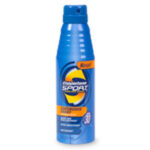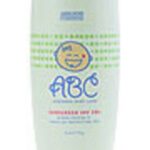Hanging out at the beach is one of my favorite pastimes during the summer months. As my own children have grown, I have learned a lot about beach vacations through trial and error. I have also been able to observe families and children on beach vacations over the past several years. I’ve noticed certain things that parents do, or don’t do, that make their beach vacation more challenging than necessary.
The following tips will help make your beach vacation with your kids more enjoyable for everyone.
1. Apply sunscreen early and often. This cannot be over-emphasized. It applies to children as well as adults, but children’s skin is much more sensitive to sunlight. When taking your kids to the beach use a sunscreen that blocks out both UVA and UVB rays. Children ages 6 months to 10 years should wear an SPF 30 waterproof sunscreen. Anyone over the age of ten should use no less than an SPF 15. Doctors recommend children younger than six months be kept out of the sun entirely.
2. Early morning and late afternoon are the best times to take kids into the sun. High noon and early afternoon heat and searing sun make kids cranky. If they aren’t enjoying the vacation, what’s the point? Take them inside during the middle of the day and enjoy a nap, family game, or movie.
3. Pack vinegar and/or meat tenderizer in case of jelly fish stings. When you head down to the beach, pour the vinegar in a small spray bottle and stash it in your beach bag. Sometimes a stray jellyfish happens along the shores of the beach and someone gets stung. A spray of vinegar will help relieve the sting. Meat tenderizer also helps relieve the sting and swelling. In case of severe swelling, seek medical attention. Generally condo or hotel management keeps first aid on-hand to deal with jelly fish stings.
Jellyfish stings are extremely painful. Patience and understanding will go a long way in calming a child who has been stung.
It doesn’t happen often, but sometimes an excess of jellyfish wash in with the tide all at one time. In these cases, keep kids out of the water.
4. Everyone wear sandals or flip-flops. You can’t help but think about being barefoot on the beach, but there are three things that will help you remember to wear sandals, water shoes, or flip-flops at the beach. Sand can be extremely hot. It is not easy to walk across sand, sizzling beneath your feet like hot coals. Asphalt is also hot. Black absorbs heat and light. If you stand on asphalt without shoes, you will never forget that concept. Thirdly, there are broken shells, bottle caps, and occasionally broken glass or other sharp edged trash hidden in the sand. Don’t risk piercing the tender soles of your kid’s feet. Make everyone wear their sandals.
5. Pack and drink plenty of water. Many people do not realize how much fluid the sun and salty water drains from your body. It doesn’t take long to become dehydrated. Have children sip on water through-out the day. Dehydration affects people differently, but some general signs include failure to urinate, dizziness, nausea, and extremely dry mouth and lips.
6. When it comes to beach toys, sometimes less is more. Cool sand gadgets that cost more never hold a kid’s attention any longer than a couple of sand buckets and shovels. Kids love to dig in the sand and try to build sand castles. The fascination with playing in the sand does not have to be enhanced with toys that plow, spin, and whirl. Those toys are usually played with once. Adults seem to be more fascinated with these little sand gadgets than kids. Kids quickly toss them to the side and reach for a shovel.
7. Arm floats do not replace adult supervision. Six inch inflatable arm devices do not keep small heads above water. For that matter, there is no guarantee that a life vest will keep their tiny faces out of the water. Do not use flotation devices as babysitters. When vacationing with your kids stay with them and keep a watchful eye on them around pools, hot tubs, and the beach. Toddlers tumble; when they do it is usually head-first into the water.
8. Kids do not understand why you don’t want sand on the towel. Expect your kids to scatter sand. In their excitement kids will get sand on you, on your towel, on the family next to you, and even in your drink. Sometimes you will be sprinkled with sand, other times you will be covered. Mentally prepare for your kids to create a sandstorm, then you will not be easily aggrivated by it when it happens.
9. There is a fascination among children and adults alike when it comes to finding seashells. Often, in the shallow waters of the beach in which your children play there are only tiny shells or shell fragments. Make your child’s vacation by spending a couple of dollars at the gift shop and “planting” large, pretty shells along the shoreline where your child can find them. Think of it as an Easter egg hunt on the beach, let the kid enjoy being a kid and experience the thrill of finding their own shells.
10. Relax. You are at the beach. There are no time schedules to keep and no rushing around to theme parks. Follow your family and children’s natural rhythm to enjoy your beach vacation. Kids will let you know when they are getting too hot, tired, or thirsty. Listen to those little voices.
The beach is a great place for a family vacation. Think ahead, plan, and pack wisely, and you will enjoy time with your family on the beautiful shores of the beach.




